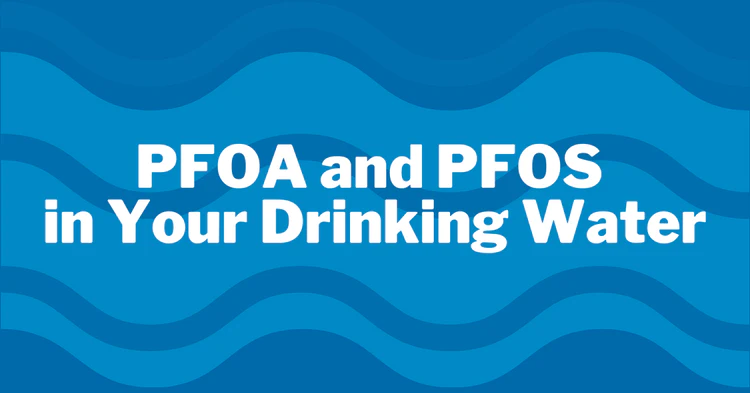What are PFOA and PFOS?
Both PFOA and PFOS are man-made compounds that belong to a group of chemicals called polyfluoroalkyl substances or the abbreviated name PFAS. PFOA is short-hand for perfluorooctanesulfonic acid and PFOS stands for perfluorooctane sulfonate. But what are PFAS? PFAS are widely used chemicals found in many different consumer, commercial, and industrial products. Their widespread use is largely due to their water-resistant properties. For example, PFOS are indestructible compounds that repel water, grease, and dirt. They are often used to coat pans or rain gear. PFOA are very good at repelling oil and water. It is a substance often used in Teflon, or the non-stick coating of pans, fast-food wrappers, and takeout containers. However, they are not biodegradable and regrettably last in the environment for a very long time.
A brief history of PFOA and PFOS
PFOA and PFOS are known to have been manufactured by the 3M Company, also known as Minnesota Mining and Manufacturing Company. They produced these chemicals for 100 years – from 1902 – 2002. Due to concerns raised by the United States Environmental Protection Agency (EPA), 3M started to phase out the manufacturing of PFOA and PFOS in 2002. As part of the PFOA Stewardship Program, The EPA furthermore consulted with the eight other prominent manufacturers of PFOA and PFOS and agreed to completely phase out the production of PFOA in 2015.
The formal statement by the EPA read:
“PFOA and PFOS are extremely persistent in the environment and resistant to typical environmental degradation processes. They are widely distributed across the higher trophic levels and are found in soil, air, and groundwater at sites across the United States. The toxicity, mobility and bioaccumulation potential of PFOS and PFOA pose potential adverse effects for the environment and human health”
How are we exposed to these contaminants?
People can be exposed by drinking contaminated water. PFAS like PFOS/PFOA get released to the environment via wastewater from factories and hence can be commonly found in groundwater. The contaminants also can seep into the soil used to grow crops and therefore end up in the food we consume. These chemicals can thus spread from the soil into surface water and from there into drinking water sources like e,g, well water. In fact, water is one of the most common sources of PFOS/PFOA exposure.
How does exposure to PFOA and PFOS affect our health?
According to the CDC, scientific studies have shown that exposure to PFAS like PFOA/PFOS can be harmful to humans and animals. These health risks include:
- Developmental effects to fetuses during pregnancy or to breastfed infants (low birth weight, accelerated puberty, skeletal variations)
- Testicular or kidney cancer
- Liver damage
- Immune effects (antibody production and immunity)
- Thyroid and cholesterol changes
Unfortunately, attempts to replace PFOA and PFOS haven’t gone great. GenX and PFBS (Perfluorbutane Sulfonic Acid) have been the proposed alternatives to PFOS and PFOA, but the EPA concluded a study in 2018 that ultimately considered these alternatives “toxic.”
The EPA concluded that GenX and PFBS could still be linked as harmful for the kidney, blood, immune system, liver, and physical development. Furthermore, the carcinogenic nature of GenX and PFBS made it a cancer-causing agent that did little to stymie the harm done by PFOA and PFOS. The search for a harmless alternative continues, while companies like ZeroWater are working diligently to create products that filter out these harmful chemicals.
A real-life example of the dangers of PFOS and PFOA
The Flint, Michigan water drinking crisis from 2013 – 2016 is a real-life example of the dangers of PFOS and PFOA polluting drinking water. At its peak, drinking water sources contained 1,309 ppt levels of PFOA and 410 ppt of PFOS. For reference, ppt stands for “parts per trillion” and is the unit of measurement used in assessing the quality of drinking water. In 2019, California regulators set the limits for PFOS and PFOA at 6.5 and 5.1 ppt, respectively, which demonstrates just how dire the Flint, Michigan drinking water crisis escalated to.
According to the Michigan Department of Environment, Great Lakes, and Energy (EGLE) more than 1.5 million residents have been drinking water contaminated with PFAS and there could be as many as 11,300 potential sites where PFAS may have been used. It’s clear that access to safe drinking water remains an issue for many Americans, but the good news is that solutions are available.
How do water filters remove PFOS and PFOA contaminants?
Water filters are one way you can reduce your exposure to PFOS/PFOA contaminants and make your tap water taste better too. ZeroWater’s 5 Stage Ion Exchange Filter is the only pour-through water filter NSF certified to reduce lead, chromium, and PFOA/PFOS. It also removes 99.6% of all dissolved solids from your tap water – more than any other leading brand.
Total dissolved solids or TDS are organic and inorganic compounds that can impact the taste, odor, and appearance of water. They enter your water supply from a wide range of sources — old piping, run-off from road salts, pesticides, fertilizers, and more. Each 5 stage water filtration pitcher comes with a TDS meter, so you can measure the levels of TDS in your water.
For those that want the ease of drinking pure-tasting water straight from the tape, The ExtremeLife™ Faucet Mount does the job with a sleek design too. Though not a 5-stage filter, the ExtremeLife™ Faucet Mount is WQA certified to reduce PFOA/PFOS, chlorine, and Particulates Class I and 3rd party tested for up to 98% lead reduction and has an average of a 400-gallon filtration capacity.
PFOA/PFOS are a growing concern, as they have become increasingly present in our environment polluting public and private drinking water. Water filters like ZeroWater’s 5 stage filter and ExtremeLife™ Faucet Mount are some of the most effective ways of reducing PFOA/PFOS and other contaminants commonly found in drinking water. Keep you and your family hydrated and healthy with great-tasting water and fewer harmful contaminants.

